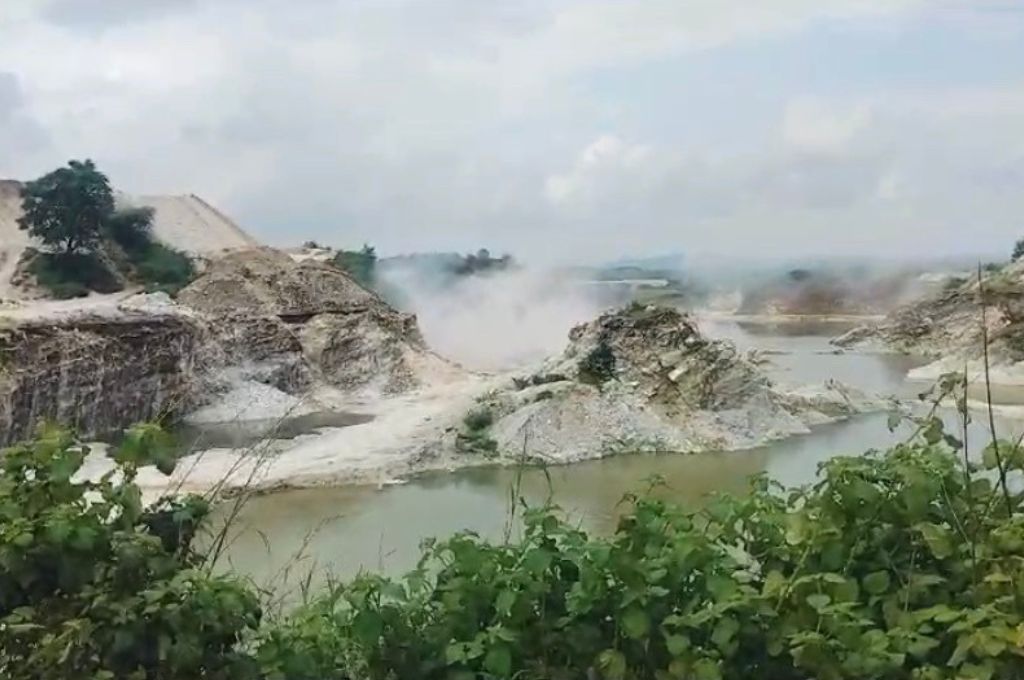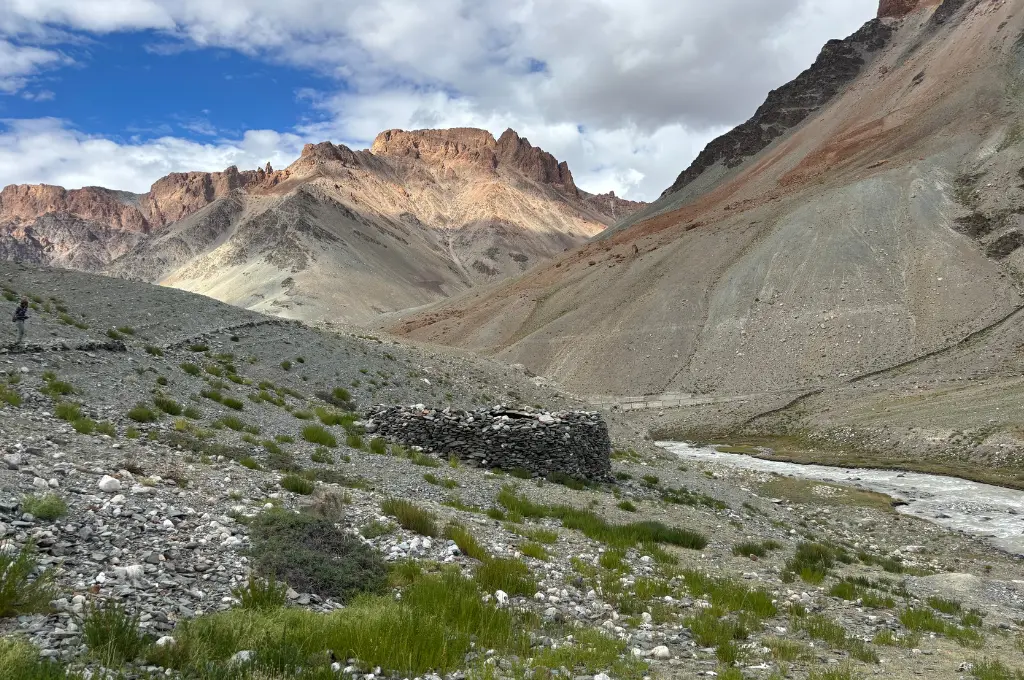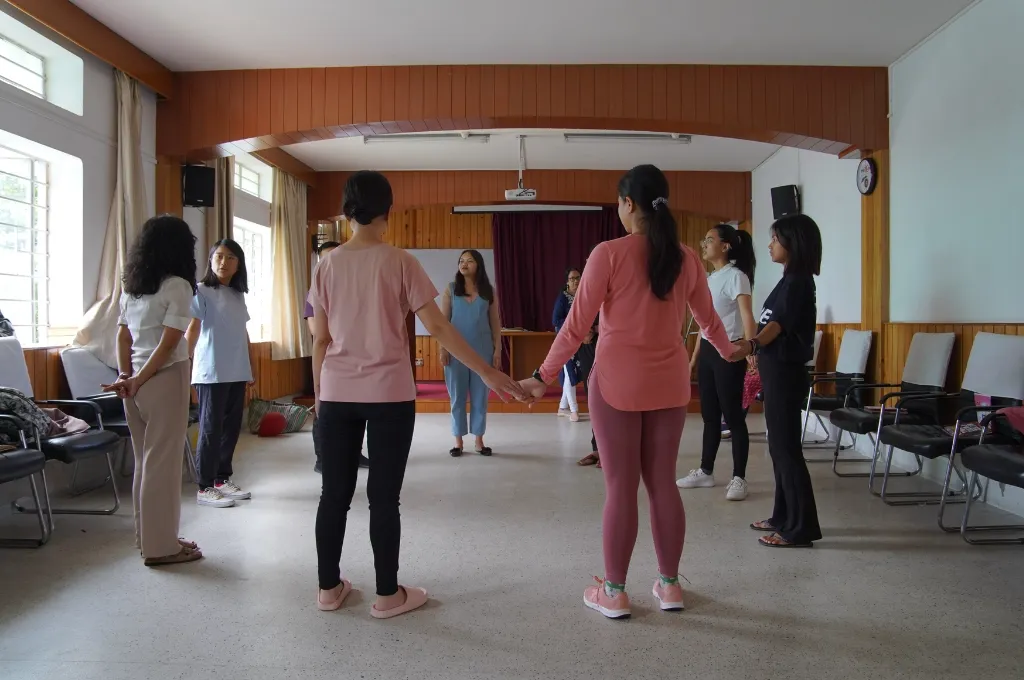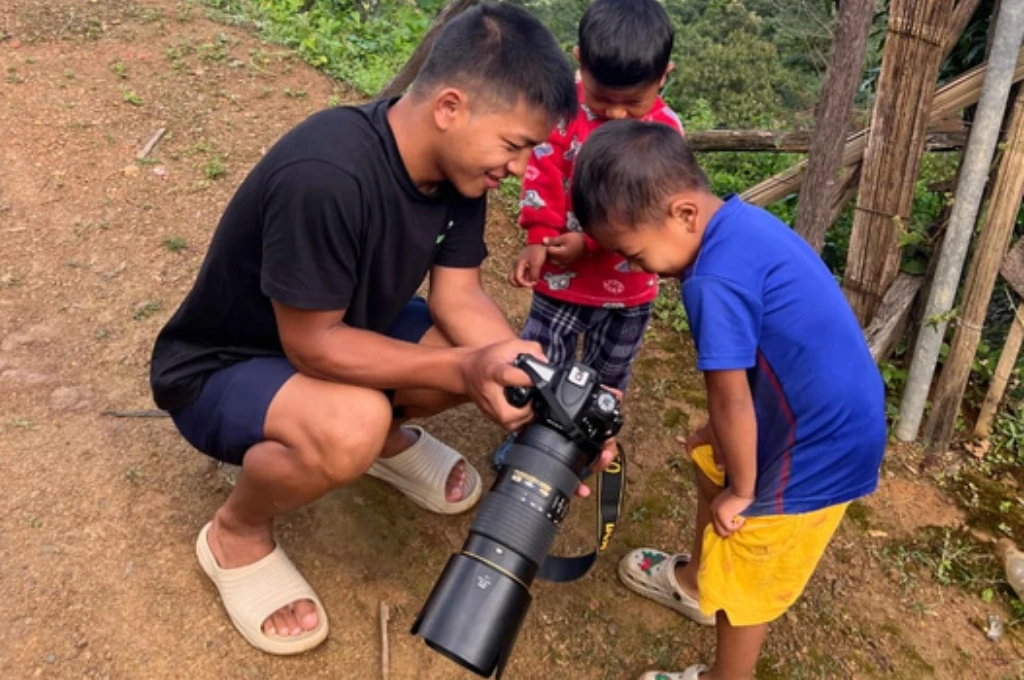READ THIS ARTICLE IN
Mining blasts, school dropouts, and a new tourist spot

Known for its vast forest area, Chhotaudepur district in Gujarat has an equally rich cultural history characterised by folk worship and religious wall paintings. It is a tribal district, and Rathwas make up a large part of the population of the land.
The Rathwas, like many other indigenous communities, have traditionally worshipped nature; this includes the surrounding dungars (hills) and their caves. The caves are adorned by Pithora paintings that trace their roots to the folk deity Baba Pithora and are regularly visited by the community members.
However, a few decades back, dolomite and granite reserves were found in the area, and since then large-scale mining and blasts in the mountains and the ground have affected all aspects of people’s lives. Apart from being the cause of several mining-related illnesses such as silicosis, these have also stymied people’s movement and threatened age-old cultural practices.
The blasts have destroyed many worship sites of the Rathwas and the flyrocks from the explosions have limited travel to nearby areas. For example, in Raipur village in Jetpur Pavi taluka, children have to pass one of these hills to reach their school. In the fear of an odd rock flying in the direction of the kids and injuring them, their parents have stopped sending them to school. The farmland of the locals is also close to the hills; since the explosions became regular, they have not been able to continue with agriculture. The villagers protested and filed an application with the gram sabha to intervene, and eventually the mining had to stop.
However, Raipur’s victory is an exception and not the norm. The issue is that mining is also the sole source of livelihood for most people living in Chhotaudepur’s villages. Khimji Bhai, a mine worker in Vanar village, says, “We have been working in the same mines since the beginning, when we used to get 12 paise as our daily wage. Our children also work in the same mines.”
According to Govind Bhai, another miner, “It takes five or six of us to fill one truck with dolomite. We’re able to fill five to six trucks in a day, and we get INR 300–350 as a group for filling one truck.” But this money isn’t enough to pay for all their needs.
Additionally, in Vanar and other villages, there are giant, abandoned dolomite pits that get filled up with rainwater. Since dolomite contains phosphorus that reacts with water and turns it green, these pits have become tourist sites where people gather to click pictures. But these pits have also been responsible for multiple accidents in recent years—passers-by have fallen into them and suffered injuries, some even succumbing to them.
Sejal Rathwa is a journalist based in Chhotaudepur, Gujarat.
—
Know more: Learn how a health crisis is brewing in rural Madhya Pradesh because of mining.
Do more: Connect with the author at sejalrathwa30596@gmail.com to learn more about and support her work.




